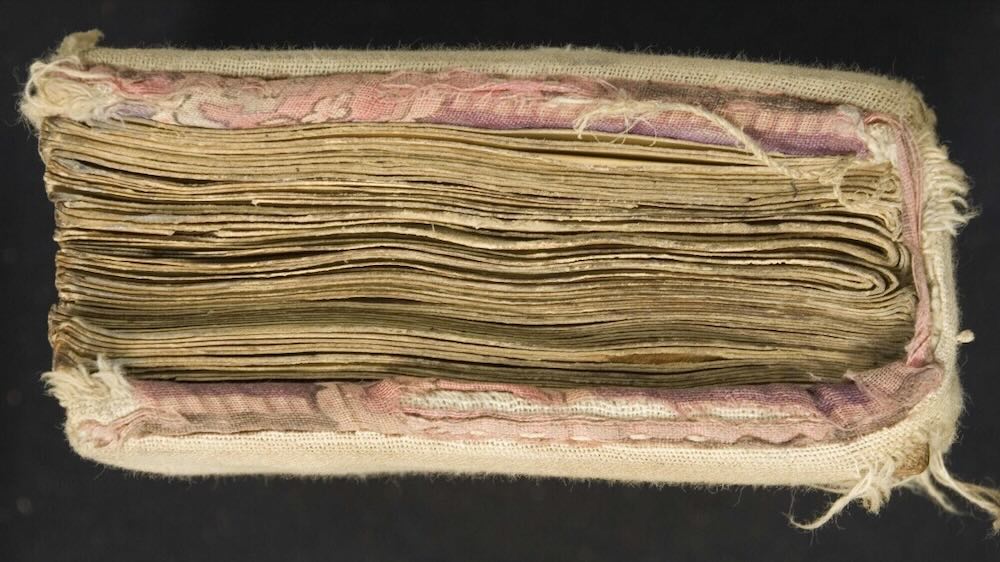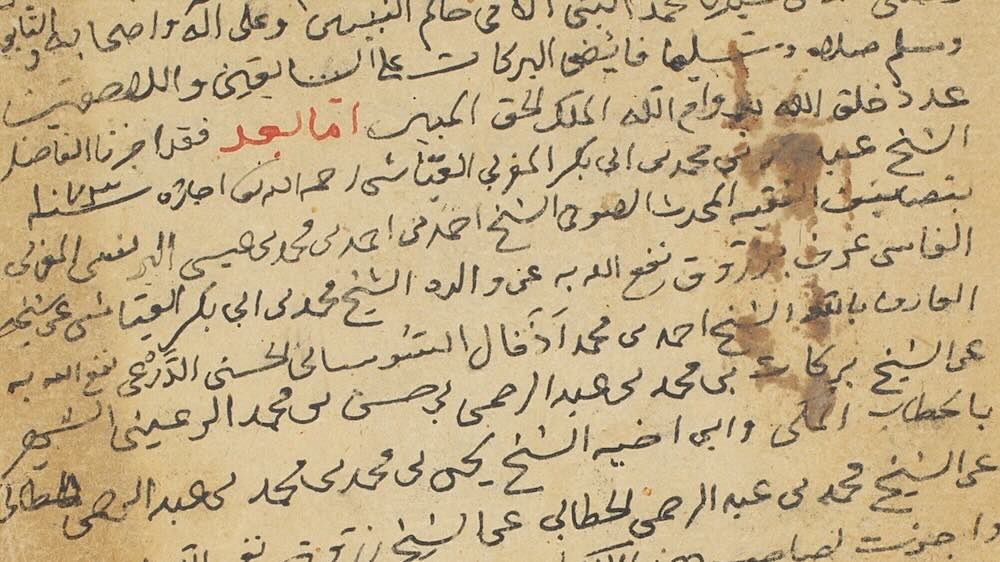Postscript — On Our Behalf
Postscript — On Our Behalf
The manuscripts of Ethiopia and Eritrea come in all shapes and sizes: there are the grandest of manuscripts with stamped leather covers and decorative designs and paintings, meant for use by wealthy patrons and prominent churches and monasteries, and there are the humblest of manuscripts with simple, rough-hewn wooden covers, carried by everyday people for their daily devotion. Long after they were held by their first readers, manuscripts tell us about the social environment for which they were created.
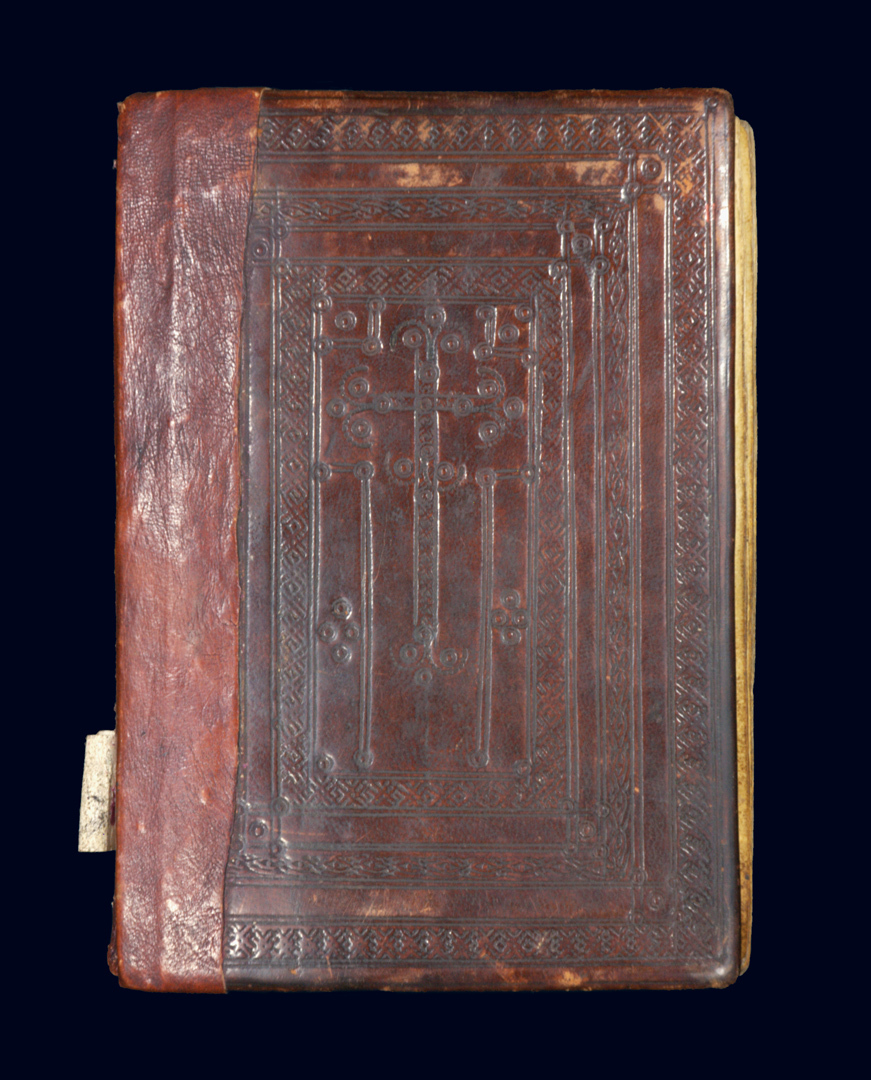
The manuscript IES 00422 conveys just such a story. At some point in the years after it was copied in the 18th century and before it was photographed in the 21st century at Addis Ababa University in Ethiopia, the names of the original owners of the manuscript were erased and replaced.
Though we don’t know the patrons’ names, we can see that the manuscript was produced by scribes, craftspeople, and painters of the highest order. The wooden covers are carefully wrapped with stamped leather, and beautiful fabric is pasted on the cover interior. The parchment is of utmost quality and the scribal hand is precise. For whomever it was made, this manuscript was a jewel in their collection.
Perhaps most eye-catching are the 39 paintings, an astonishing number for such a small manuscript measuring just 7.3 x 5.1 x 2.1 inches. After an initial painting of the Holy Trinity, the artist illustrates a hymn to Jesus called O-za-waradka (ኦዘወረድከ), meaning “O you who descended.” Each of the hymn’s 25 stanzas describes a scene from the life of Jesus and is followed by a stunning painting of the scene.
One example is the painting of the Annunciation on folio 13v, which illustrates the first of the following three stanzas of the hymn:
“O you who took on flesh from a virgin on our behalf
Listen to us, our Lord and our SaviorO you who was born from Mary on our behalf
Listen to us, our Lord and our SaviorO you who was baptized in the Jordan on our behalf
Listen to us, our Lord and our Savior”
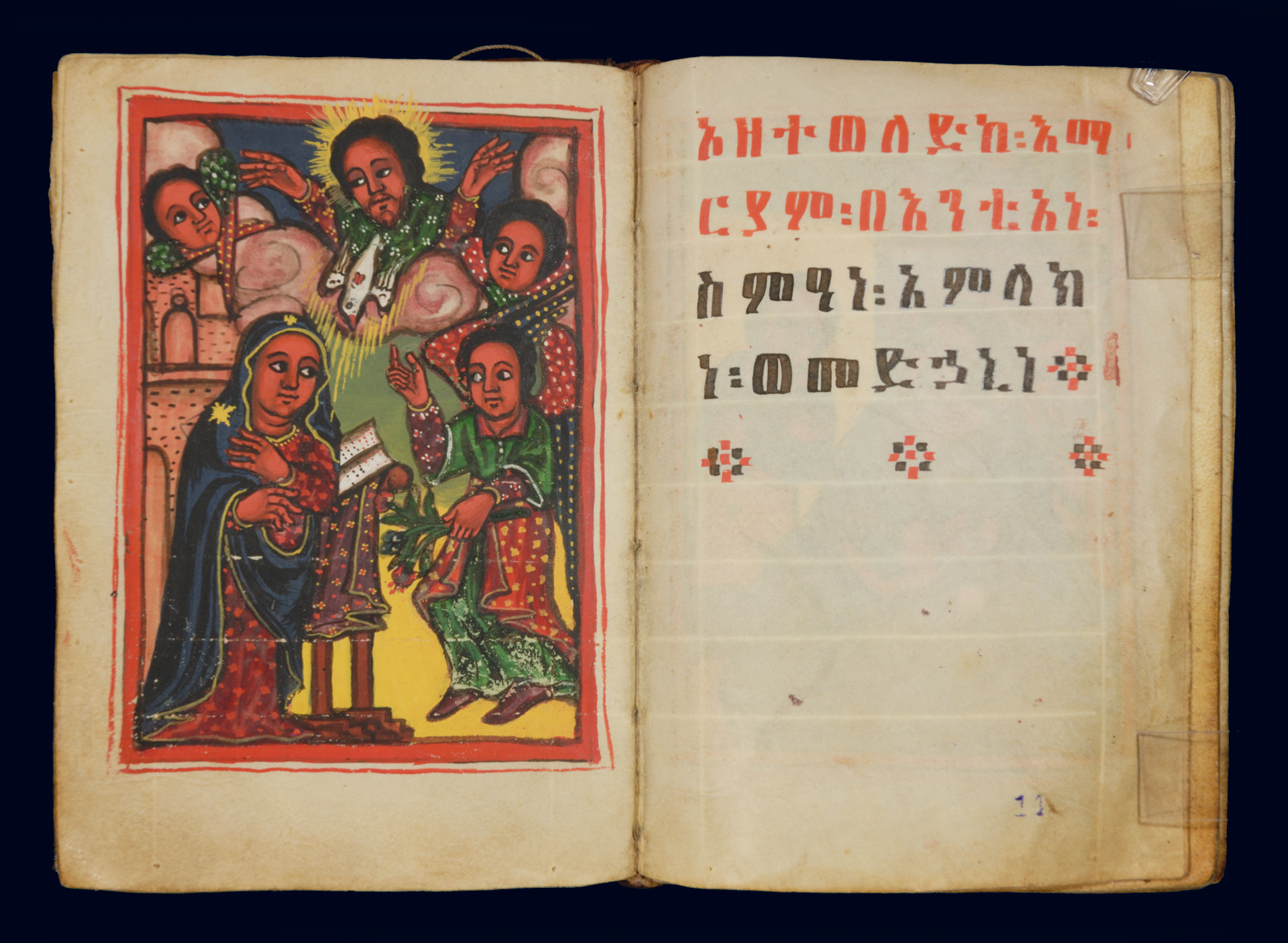
There are several important details in the painting that a reader might notice. Mary is wearing her customary blue cloak with embroidered crosses on her shoulder and head. The archangel Gabriel, holding a bouquet of flowers (traditionally lilies), appears to Mary while she reads from a book on a lectern in the Temple. God the Father, whose glory shines out beyond the red border of the painting, appears from pink heavenly clouds, accompanied by two angels. And, at the center of the painting, the Holy Spirit descends from the heavens toward Mary in the form of a dove.
The makers of IES 00422 skillfully engage the mind of the reader, from the decorative cover to the hymn and paintings, all bringing the words to life.
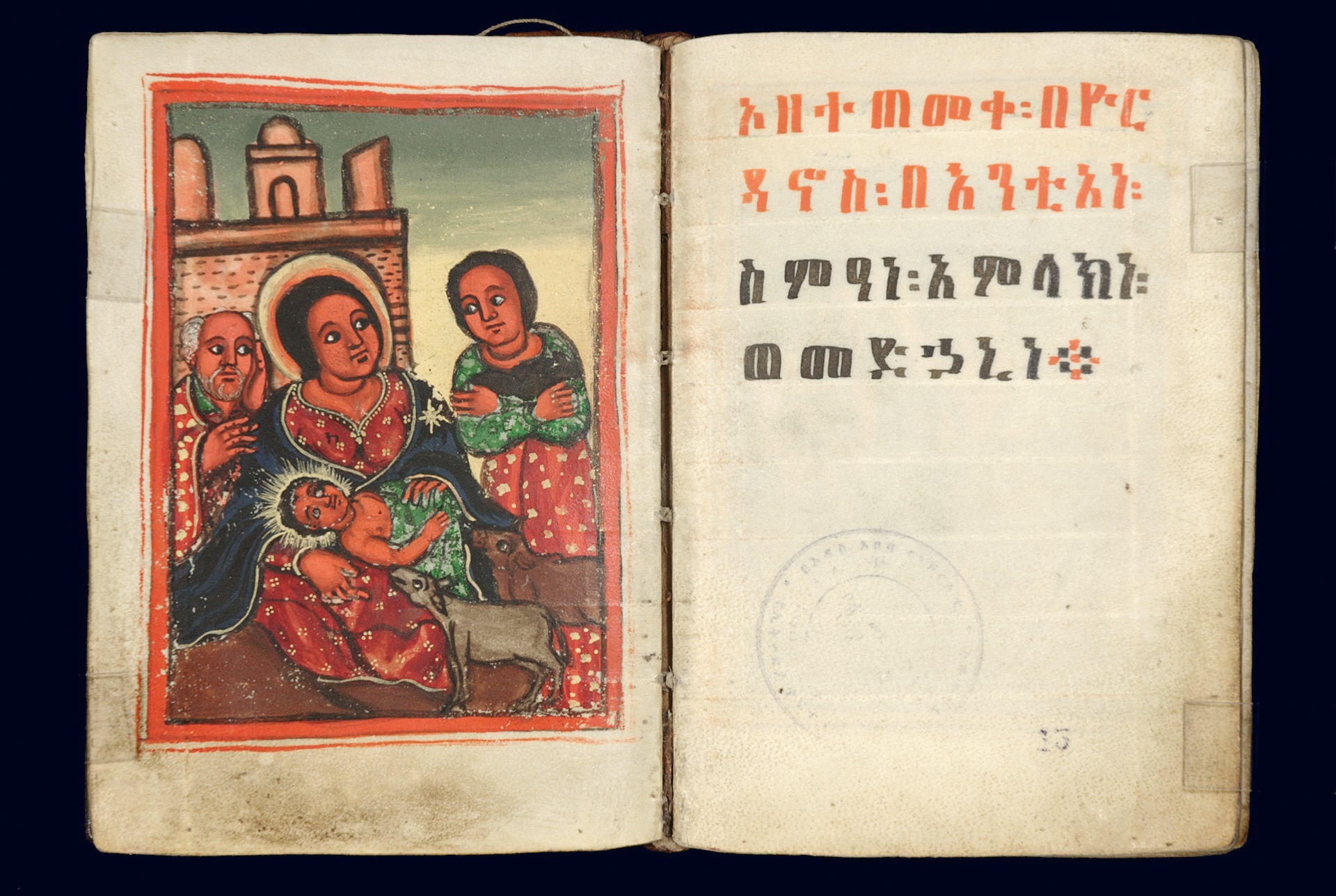
A version of this story originally appeared in the Winter 2024 issue of HMML Magazine.

